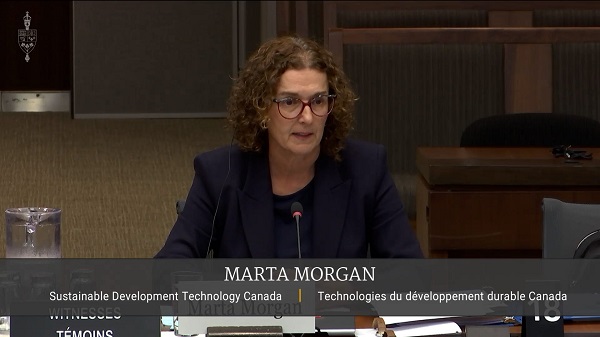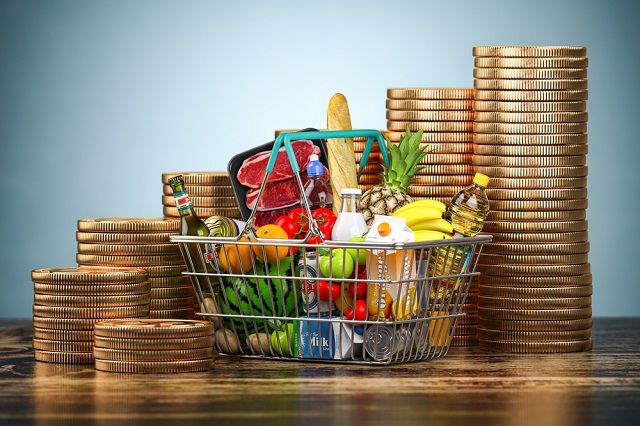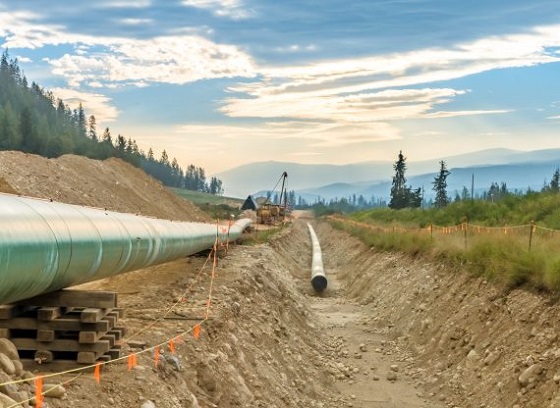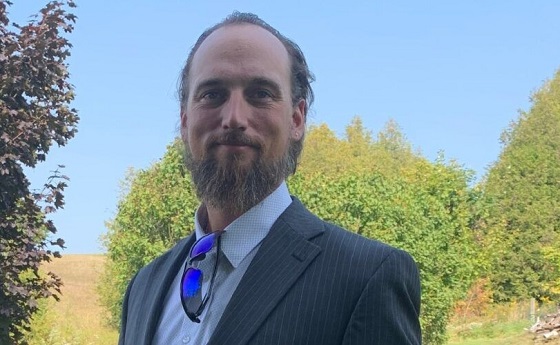National
How Rick Perkins and Larry Brock Revealed a $330 Million Cover-Up While Liberal MPs Run Damage Control

The True Cost of Letting Corruption Slide
Canada’s government is rotting from the inside, and if you needed more proof, look no further than Public Accounts of Canada (PACP) meeting 143. What we witnessed was a showcase of blatant corruption, institutional incompetence, and Trudeau’s Liberal elite running a racket—this time under the guise of environmentalism and “clean tech.” Sustainable Development Technology Canada (SDTC), the so-called green tech fund, has turned into nothing more than a green slush fund used to enrich Trudeau’s cronies while taxpayers foot the bill.
Let’s break it down: Trudeau’s government has turned what should have been a platform to invest in cutting-edge green technology into a cash pipeline for Liberal insiders. The PACP meeting laid bare how $330 million of taxpayer money flowed into conflicted projects approved by board members who had ties to the very companies benefiting from these funds. This isn’t negligence—this is corruption, plain and simple.
The Heroes of Accountability: Larry Brock and Rick Perkins
Two Conservative MPs stood out during this farcical hearing, and thank God they did. Larry Brock and Rick Perkins relentlessly grilled Marta Morgan, the bureaucrat who’s supposed to be in charge of overseeing SDTC. Let’s be real, though—Morgan’s job isn’t about fixing anything. Her role is to protect Trudeau’s insiders, to dodge questions, and to ensure that Canadians never find out the full extent of how deep this rot goes.
Larry Brock didn’t mince words when he compared the SDTC corruption to the Sponsorship Scandal, the Liberal boondoggle from the early 2000s that took down the Martin government. In this case, billions of dollars earmarked for clean technology are being funneled into projects tied to people sitting on SDTC’s board. “This is the sponsorship-style level of corruption within the government, the likes of which we haven’t seen since that scandal,” Brock declared.
Brock’s comparison is spot on. The Sponsorship Scandal was about buying influence with taxpayer money, and SDTC is no different. What’s worse is that this time, it’s all happening under the guise of fighting climate change. Trudeau’s Liberals have mastered the art of using high-minded rhetoric about the environment to hide what’s really happening—a cash grab for Liberal-friendly businesses.
Then there’s Rick Perkins, who absolutely took Marta Morgan to task. He demanded answers about why the SDTC board hadn’t taken steps to recover the $330 million in conflicted transactions. Let’s not forget that Annette Verschuren, former SDTC chair, was found guilty by the Ethics Commissioner for approving $220,000 in funds to her own company. Perkins didn’t hesitate to ask Morgan why the board hadn’t moved to recover this money, despite months having passed since the findings came to light.
“Why have you not taken steps to recover money for the taxpayer? The mandate is there—why aren’t you acting?” Perkins asked pointedly.
Morgan’s response? The same old bureaucratic doublespeak we’ve heard for years. “It has taken a few months for the board to get up and running… We have engaged legal advice,” she said, failing to provide any real answer. That’s not oversight—it’s stonewalling.
Morgan’s Evasion, Liberal Corruption Laid Bare
Morgan’s refusal to answer basic questions about conflicts of interest or the recovery of misallocated funds is exactly what you’d expect from Trudeau’s bureaucrats. When Perkins asked which law firm was advising SDTC on recovering taxpayer funds, Morgan dodged. She refused to name the firm, hiding behind vague references to “ongoing processes.” But let’s be clear here—this is all about protecting the same insiders who enabled this corruption in the first place.
Perkins saw right through it. “Are you getting legal advice as to what process should be followed to recover money? Yes or no? And if you say yes, which law firm is giving you that advice?” he asked, exposing the depth of the cover-up. Morgan couldn’t answer. Why? Because naming the firm would likely reveal the same old swamp creatures, still entangled in this corrupt web of green grift.
This isn’t about oversight or accountability—this is about Trudeau’s Liberals using every trick in the book to protect their insiders.
Redactions, Non-Answers, and Bureaucratic Cover-Ups
But it wasn’t just about recovering money. Larry Brock highlighted the heavily redacted documents that SDTC provided to the committee. He slammed the government for hiding the truth from Canadians, calling the redactions a deliberate attempt to cover up the depth of the corruption. “No small surprise that government departments heavily redacted hundreds of pages… the opposite of transparency and accountability!” Brock exclaimed, expressing the frustration that every taxpayer should feel.
It’s infuriating but not surprising. Trudeau’s Liberals love to talk about transparency and openness, but when push comes to shove, they’ll redact every piece of evidence that exposes their corruption. They know the truth is damning, and they’ll do anything to keep it hidden.
Brock also pressed Morgan on why SDTC continued to take legal advice from Osler, the very firm that helped facilitate the conflicts of interest at the heart of this scandal. Perkins had hammered her on this earlier, and Brock followed up, demanding an explanation for why SDTC hadn’t cut ties with a firm so deeply implicated in the corruption.
Morgan’s response? You guessed it—another non-answer. “Processes are being followed, and we’re looking at legal structures,” she mumbled, refusing to explain why the same law firm that helped create this mess is still providing legal advice. It’s absurd, but it’s par for the course in Trudeau’s Canada.
Liberal MPs Like Iqra Khalid: Protecting the Swamp
Let’s not forget Liberal MP Iqra Khalid, who swooped in during the committee to do what she does best—protect Trudeau’s swamp. Rather than asking tough questions or holding the government accountable, she focused on soft issues like governance improvements and the future of SDTC. Khalid didn’t once mention the $330 million in misallocated funds or the conflicts of interest that allowed board members to enrich themselves.
Instead, she harped on future reforms and administrative improvements, as if that would somehow wipe away the corruption embedded in this system. Khalid is playing a role that every Liberal shill plays—pretend everything is fine, talk about process, and hope that Canadians forget about the billions of dollars being wasted.
The Bigger Picture: SNC-Lavalin Was the Warning
This SDTC scandal is bigger than just the misallocation of funds. It’s a pattern of corruption that’s plagued Trudeau’s government from day one. If you look back, SNC-Lavalin was the canary in the coal mine. That scandal showed us exactly what Trudeau is willing to do—protect his corporate friends at all costs. Trudeau went so far as to pressure his own Attorney General to interfere in a criminal case to help SNC-Lavalin avoid prosecution for bribery.
Back then, Liberal voters shrugged. Trudeau got away with it, and now we’re seeing the consequences. This green slush fund is what happens when corruption goes unchecked. Liberals have become emboldened, knowing that they can use virtue-signaling about the environment to enrich their own, all while claiming they’re saving the planet.
This is what happens when corruption slides.
Business
Taxing food is like slapping a surcharge on hunger. It needs to end

This article supplied by Troy Media.
Cutting the food tax is one clear way to ease the cost-of-living crisis for Canadians
About a year ago, Canada experimented with something rare in federal policymaking: a temporary GST holiday on prepared foods.
It was short-lived and poorly communicated, yet Canadians noticed it immediately. One of the most unavoidable expenses in daily life—food—became marginally less costly.
Families felt a modest but genuine reprieve. Restaurants saw a bump in customer traffic. For a brief moment, Canadians experienced what it feels like when government steps back from taxing something as basic as eating.
Then the tax returned with opportunistic pricing, restoring a policy that quietly but reliably makes the cost of living more expensive for everyone.
In many ways, the temporary GST cut was worse than doing nothing. It opened the door for industry to adjust prices upward while consumers were distracted by the tax relief. That dynamic helped push our food inflation rate from minus 0.6 per cent in January to almost four per cent later in the year. By tinkering with taxes rather than addressing the structural flaws in the system, policymakers unintentionally fuelled volatility. Instead of experimenting with temporary fixes, it is time to confront the obvious: Canada should stop taxing food altogether.
Start with grocery stores. Many Canadians believe food is not taxed at retail, but that assumption is wrong. While “basic groceries” are zero-rated, a vast range of everyday food products are taxed, and Canadians now pay over a billion dollars a year in GST/HST on food purchased in grocery stores.
That amount is rising steadily, not because Canadians are buying more treats, but because shrinkflation is quietly pulling more products into taxable categories. A box of granola bars with six bars is tax-exempt, but when manufacturers quietly reduce the box to five bars, it becomes taxable. The product hasn’t changed. The nutritional profile hasn’t changed. Only the packaging has changed, yet the tax flips on.
This pattern now permeates the grocery aisle. A 650-gram bag of chips shrinks to 580 grams and becomes taxable. Muffins once sold in six-packs are reformatted into three-packs or individually wrapped portions, instantly becoming taxable single-serve items. Yogurt, traditionally sold in large tax-exempt tubs, increasingly appears in smaller 100-gram units that meet the definition of taxable snacks. Crackers, cookies, trail mixes and cereals have all seen slight weight reductions that push them past GST thresholds created decades ago. Inflation raises food prices; Canada’s outdated tax code amplifies those increases.
At the same time, grocery inflation remains elevated. Prices are rising at 3.4 per cent, nearly double the overall inflation rate. At a moment when food costs are climbing faster than almost everything else, continuing to tax food—whether on the shelf or in restaurants—makes even less economic sense.
The inconsistencies extend further. A steak purchased at the grocery store carries no tax, yet a breakfast wrap made from virtually the same inputs is taxed at five per cent GST plus applicable HST. The nutritional function is not different. The economic function is not different. But the tax treatment is entirely arbitrary, rooted in outdated distinctions that no longer reflect how Canadians live or work.
Lower-income households disproportionately bear the cost. They spend 6.2 per cent of their income eating outside the home, compared with 3.4 per cent for the highest-income households. When government taxes prepared food, it effectively imposes a higher burden on those often juggling two or three jobs with limited time to cook.
But this is not only about the poorest households. Every Canadian pays more because the tax embeds itself in the price of convenience, time and the realities of modern living.
And there is an overlooked economic dimension: restaurants are one of the most effective tools we have for stimulating community-level economic activity. When people dine out, they don’t just buy food. They participate in the economy. They support jobs for young and lower-income workers. They activate foot traffic in commercial areas. They drive spending in adjacent sectors such as transportation, retail, entertainment and tourism.
A healthy restaurant sector is a signal of economic confidence; it is often the first place consumers re-engage when they feel financially secure. Taxing prepared food, therefore, is not simply a tax on convenience—it is a tax on economic participation.
Restaurants Canada has been calling for the permanent removal of GST/HST on all food, and they are right. Eliminating the tax would generate $5.4 billion in consumer savings annually, create more than 64,000 foodservice jobs, add over 15,000 jobs in related sectors and support the opening of more than 2,600 new restaurants across the country. No other affordability measure available to the federal government delivers this combination of economic stimulus and direct relief.
And Canadians overwhelmingly agree. Eighty-four per cent believe food should not be taxed, regardless of where it is purchased. In a polarized political climate, a consensus of that magnitude is rare.
Ending the GST/HST on all food will not solve every affordability issue but it is one of the simplest, fairest and most effective measures the federal government can take immediately.
Food is food. The tax system should finally accept that.
Dr. Sylvain Charlebois is a Canadian professor and researcher in food distribution and policy. He is senior director of the Agri-Food Analytics Lab at Dalhousie University and co-host of The Food Professor Podcast. He is frequently cited in the media for his insights on food prices, agricultural trends, and the global food supply chain.
Troy Media empowers Canadian community news outlets by providing independent, insightful analysis and commentary. Our mission is to support local media in helping Canadians stay informed and engaged by delivering reliable content that strengthens community connections and deepens understanding across the country.
Energy
75 per cent of Canadians support the construction of new pipelines to the East Coast and British Columbia

-
71 per cent of Canadians find the approval process too long.
-
67 per cent of Quebecers support the Marinvest Energy natural gas project.
“While there has always been a clear majority of Canadians supporting the development of new pipelines, it seems that the trade dispute has helped firm up this support,” says Gabriel Giguère, senior policy analyst at the MEI. “From coast to coast, Canadians appreciate the importance of the energy industry to our prosperity.”
Three-quarters of Canadians support constructing new pipelines to ports in Eastern Canada or British Columbia in order to diversify our export markets for oil and gas.
This proportion is 14 percentage points higher than it was last year, with the “strongly agree” category accounting for almost all of the increase.
For its part, Marinvest Energy’s natural gas pipeline and liquefaction plant project, in Quebec’s North Shore region, is supported by 67 per cent of Quebecers polled, who see it as a way to reduce European dependence on Russian natural gas.
Moreover, 54 per cent of Quebecers now say they support the development of the province’s own oil resources. This represents a six-point increase over last year.
“This year again, we see that this preconceived notion according to which Quebecers oppose energy development is false,” says Mr. Giguère. “Quebecers’ increased support for pipeline projects should signal to politicians that there is social acceptability, whatever certain lobby groups might think.”
It is also the case that seven in ten Canadians (71 per cent) think the approval process for major projects, including environmental assessments, is too long and should be reformed. In Quebec, 63 per cent are of this opinion.
The federal Bill C-5 and Quebec Bill 5 seem to respond to these concerns by trying to accelerate the approval of certain large projects selected by governments.
In July, the MEI recommended a revision of the assessment process in order to make it swift by default instead of creating a way to bypass it as Bill C-5 and Bill 5 do.
“Canadians understand that the burdensome assessment process undermines our prosperity and the creation of good, well-paid jobs,” says Mr. Giguère. “While the recent bills to accelerate projects of national interest are a step in the right direction, it would be better simply to reform the assessment process so that it works, rather than creating a workaround.”
A sample of 1,159 Canadians aged 18 and older were surveyed between November 27 and December 2, 2025. The results are accurate to within ± 3.5 percentage points, 19 times out of 20.
-

 Censorship Industrial Complex19 hours ago
Censorship Industrial Complex19 hours agoDeath by a thousand clicks – government censorship of Canada’s internet
-

 Automotive1 day ago
Automotive1 day agoPoliticians should be honest about environmental pros and cons of electric vehicles
-

 Great Reset22 hours ago
Great Reset22 hours agoViral TikTok video shows 7-year-old cuddling great-grandfather before he’s euthanized
-

 Daily Caller20 hours ago
Daily Caller20 hours agoChinese Billionaire Tried To Build US-Born Baby Empire As Overseas Elites Turn To American Surrogates
-

 Alberta21 hours ago
Alberta21 hours agoSchools should go back to basics to mitigate effects of AI
-

 Alberta2 days ago
Alberta2 days agoAlberta’s new diagnostic policy appears to meet standard for Canada Health Act compliance
-

 Bruce Dowbiggin1 day ago
Bruce Dowbiggin1 day agoHunting Poilievre Covers For Upcoming Demographic Collapse After Boomers
-

 COVID-191 day ago
COVID-191 day agoFreedom Convoy protester appeals after judge dismissed challenge to frozen bank accounts






